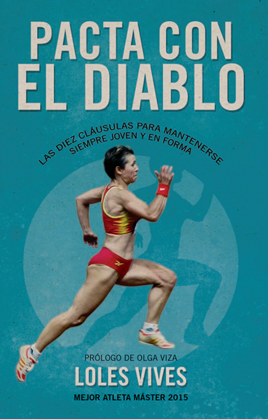MAGAZINE / Miradas / Historias / English
The best player ever played for Sevilla
The Hand of God, with a mystic left foot, was perhaps the greatest football player of all time. Diego Armando Maradona’s playing career was marked by up and downs, by moments of brilliance and controversial ones. That’s a common feature for every footballer but things tend to become bigger for the best player ever, one to which the life was completely out of the ordinary. Maradona personified the game in a span between 1978 and 1994. Some of the most famous sports photographs of all time are images capturing Maradona’s genius. What about Maradona’s famous punch (the above mentioned Hand of God…) that sent the ball past Peter Shilton in 1986 World Cup? How forget the 1982 World Cup’s photo that eternalize six feared Belgians in front of Argentina’s No 10? And just take your time to search the iconic photograph taken at the World Cup in 1994 where Maradona celebrates a goal screaming at a video camera.
Not only he was brilliant on the pitch but he also won. You can idolize Lionel Messi and Cristiano Ronaldo or have Glenn Hoddle or David Ginola or Eric Cantona as childhood heroes but Maradona get the medals. He won the World Cup in 1986; he went out from the streets to become the idol of the worldwide’s working classes. All was written about El Diego’s various spells at Boca Juniors. And we know everything about his stint in Italy, where he joined a team from a poor and suffering southern city to push Napoli to their first ones Scudettos ever in 1987 and 1990. And, maybe, you have read something about Maradona virtually playing on one leg and crying en route to losing in 1990 World Cup final against a solid but far from spectacular West Germany side. ‘He played, he won, he peed, he lost,’ as Uruguayan great Eduardo Galeano wrote about him on his book Football in Sun and Shadow.
So, you can argue that everything has been written and everything described about Diego’s greatness and about his priceless left foot. Well, not at all. In fact, there is a small part of Maradona’s playing career rarely covered. That is El Diego’s brief but tumultuous spell at the Sanchez Pizjuan. After Maradona was banned for 15 months after testing positive for cocaine in Italy in 1991, he was involved in a contractual argument with Napoli. With 1994 USA World Cup just two years ahead, and with FIFA focused on trying to launch soccer in America, there was no way that football’s governing body could try to reach their goal without the presence in the field of their best player. With three years remaining on his deal with Napoli, but with no purpose to play again in an environment that became toxic for him, Maradona fought for his freedom in the way to find a club ready to give him a chance to revive his career. With options at Boca and Olympique Marseille quickly faded, a trip in Andalusia remained the only, real chance Diego had to rebound.
A brief telephone conversation with Sevilla’s manager Carlos Bilardo (the man who led Argentina to two consecutive World Cup finals in 1986 and 1990 with Maradona) in July 1992 persuaded former Albiceleste’s troubled captain to sign for a team featuring other big stars such as Diego Simeone and Davor Suker. “I’m no longer No. 1 in the world, but I have the same dreams as I did when I was a kid of 15,” Maradona told the reporters at the Sanchez Pizjuan during his introductory press conference.
Although Sevilla wasn’t a force in Europe neither in La Liga at the time, they still had some ambitions. But, with Johan Cruyff’s Dream Team and Real Madrid leading the dances (nothing new under the sun…) Sevilla won nothing, finishing just seventh. Maradona scored five goals out from 26 Liga appearances, showing excerpts of greatness and, as usual, some controversies. A great performance against Fernando Hierro’s RealMadrid in a 2-0 home win was the highlight of Maradona’s stay in Andalusia. But, as the season went on, moments of brilliance became more infrequent, and controversies grown. Frictions with Bilardo surfaced, and Maradona also had in nightclubs throughout Seville. The fact Diego prioritized playing for Albiceleste over club didn’t help.
In early 1993, Maradona was called up for two friendlies against Denmark and Brazil. Club’s board of directions gave Maradona the permission to play in one of them. But Diego went against his club playing in both the games. The relationship between player and club went south. To made things worse, in the last home game of the season, against Burgos, Maradona asked to be sub at halftime, due to a knee injury. Instead, with Sevilla leading the game, Diego fold to Bilardo and teammates’ prayers taking three cortisone injections to continue playing. But, with just eight minutes into the second half, Bilardo sub him making Diego anger. Maradona’s furious reaction went highlighted across the whole Spain. After this, Maradona never more played for Sevilla.
The marriage between the Argentinian and the Andalusians failed. Maradona left for Newell’s Old Boys, putting an end on his time in Seville. It was not an unforgettable stint, but one to remember. In an era in which with correctly exalt the magnificent Unai Emery’s side, we can’t forget Sevilla’s greatest player of all time… or, maybe, the greatest player of all time wearing a Sevilla’s shirt.
* Michele Tossani is a football analyst.
Follow @ArrigoSacchi442


BUSCADOR DE CATEGORÍAS
BUSCADOR POR MES
ÚLTIMOS TWEETS
Tweets por @martiperarnauSÍGUENOS EN FACEBOOK






